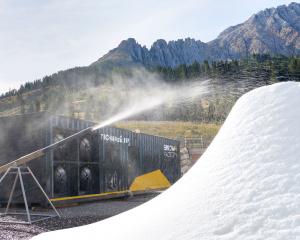The September 2011 report outlines potential consequences of a dam failure and was required as part of the energy company's standard practice, not because of any concerns with the dam.
It has been made public now due to its inclusion in the agenda for the Clutha Management Committee meeting on Friday.
Albert Town, situated at the confluence of the Hawea and Clutha Rivers, would be the town most affected, with possibly 158 to 230 properties, two hotels and a campsite flooded.
However, providing a breach of the dam was noticed when it first happened, there would be a three-hour window before the flood waters reached the town, allowing time for evacuation.
Depending on initial water levels in Lake Wanaka, there could also be extensive damage through Wanaka town with 60 buildings, including hotels, cafes and a supermarket, affected.
Because of the large storage capacity of Lake Wanaka, it would be three days before the peak level was reached.
Three bridges across the Hawea and Clutha Rivers would probably be destroyed by the flood but the one on State Highway 8B at Cromwell would not.
The ''flood wave'' travel time from Lake Hawea to the upper reaches of Lake Dunstan would be seven hours, allowing plenty of warning time for Contact Energy to increase the flow of water through the Clyde Dam to lower the level of the lake.
The Clyde Dam is 94km downstream of the Hawea dam.
Water would flow over the top of the Clyde Dam (overtopping) for up to 26 hours, but it had been designed to withstand this.
Severe bank and river bed erosion could occur, as could deposits of debris due to the ''heavily wooded banks''.
The report, by AECOM New Zealand Ltd, used two dam-failure scenarios - an earthquake-induced failure and a failure induced by high lake levels following a ''probable maximum flood event''.
It was the latter failure that would cause the most damage.
The Lake Hawea Control Dam is an earth-fill dam. The report says failures of that kind of dam are ''extremely rare but have occurred in the past as the result of internal erosion or overtopping''.












